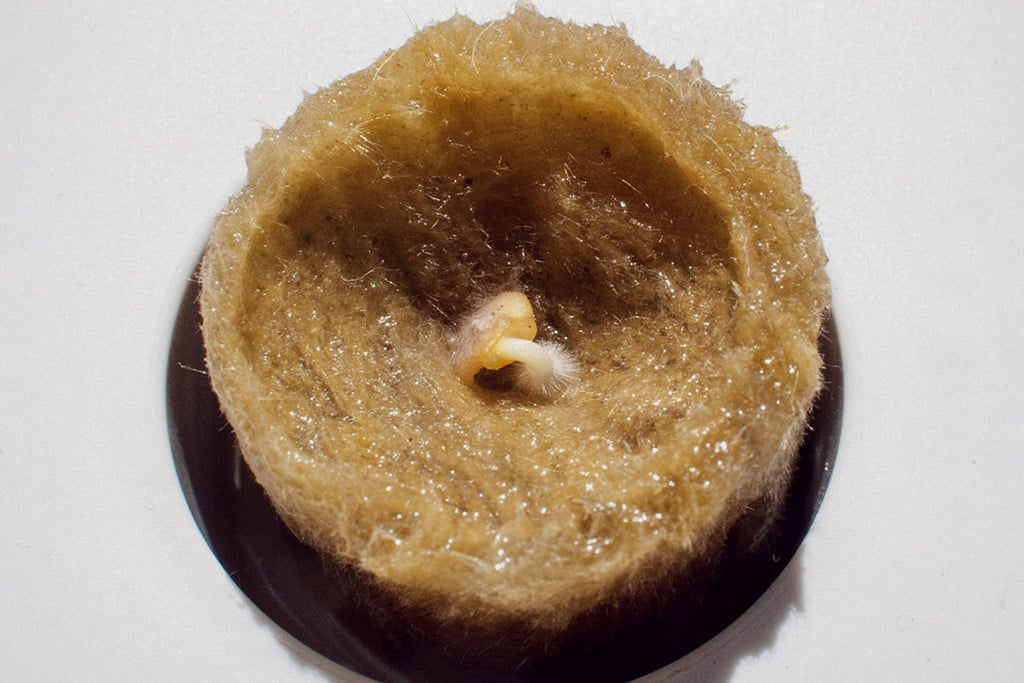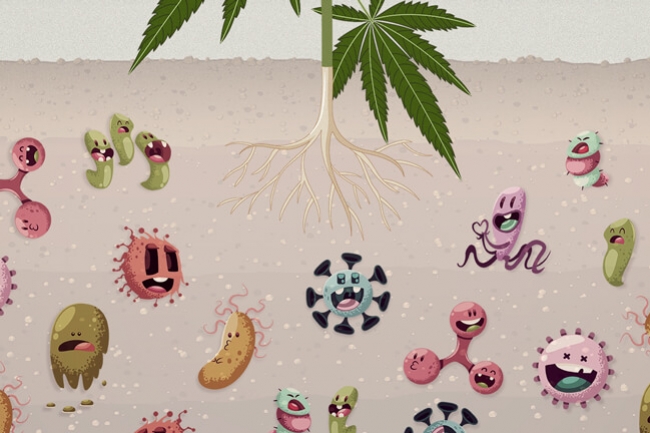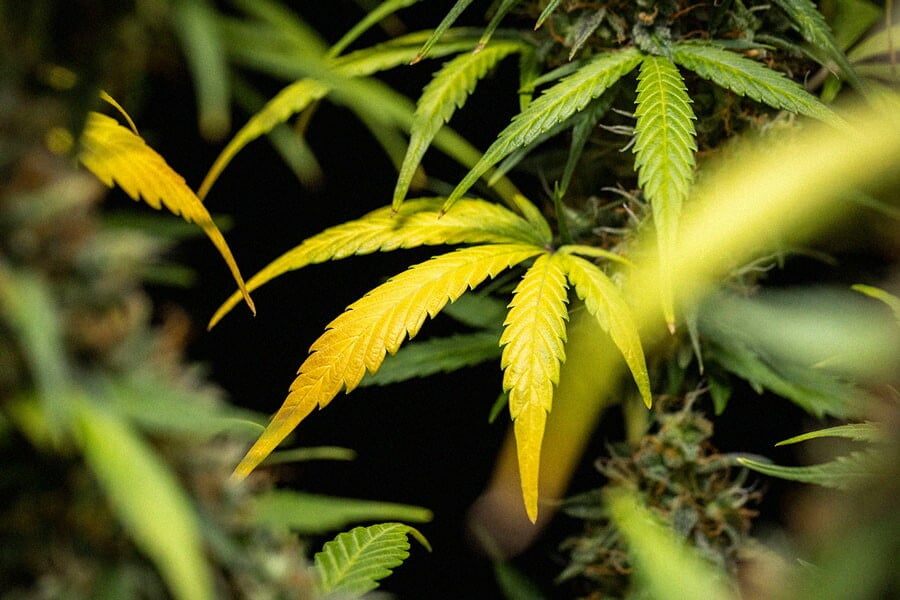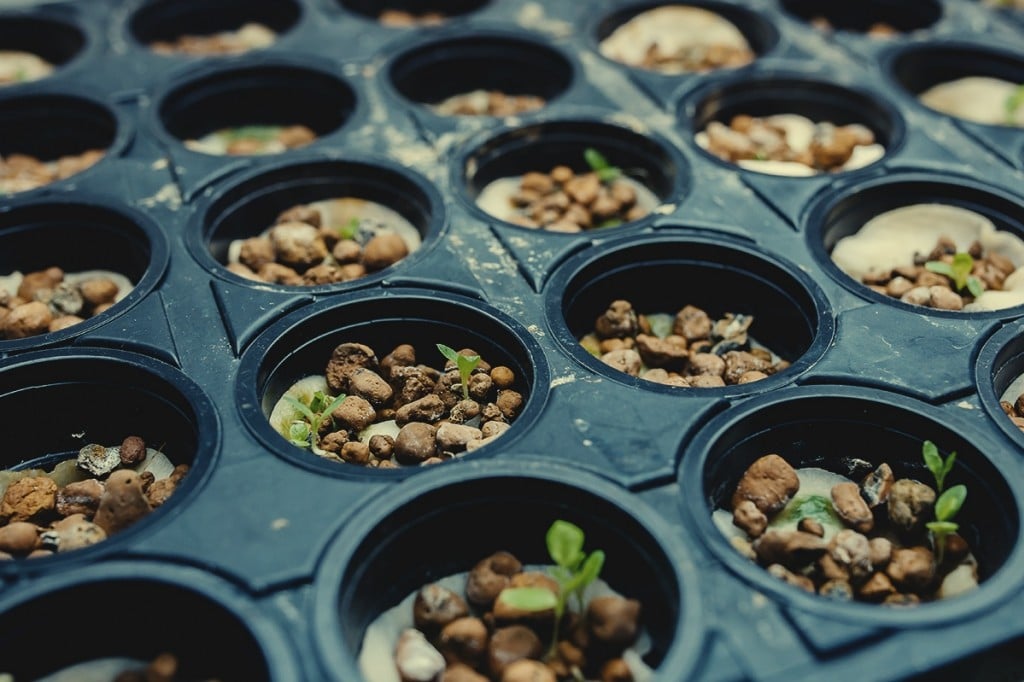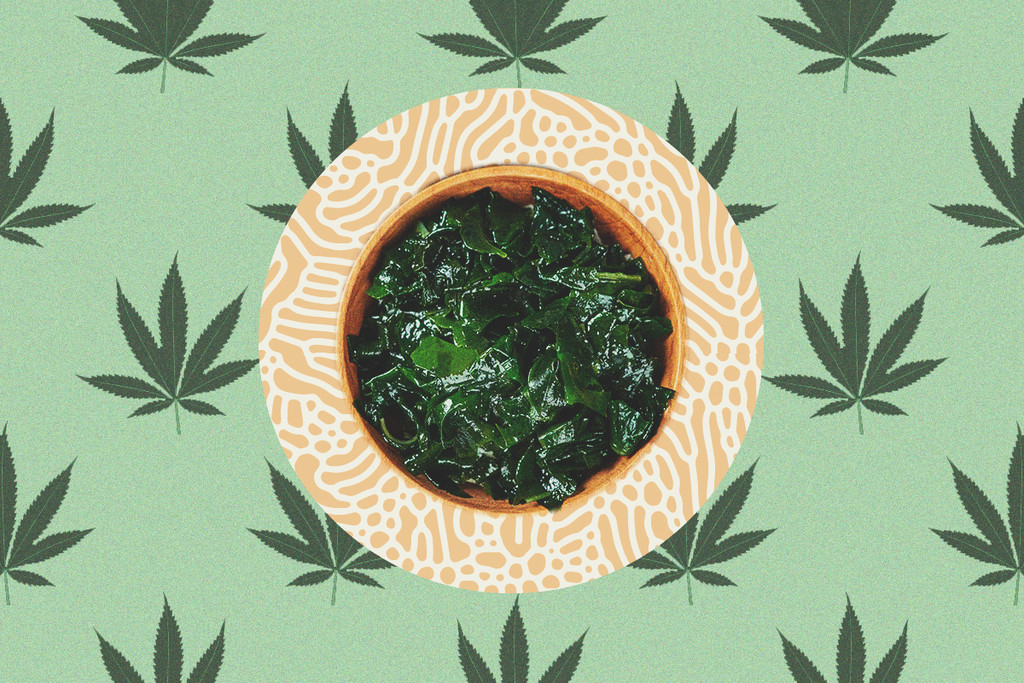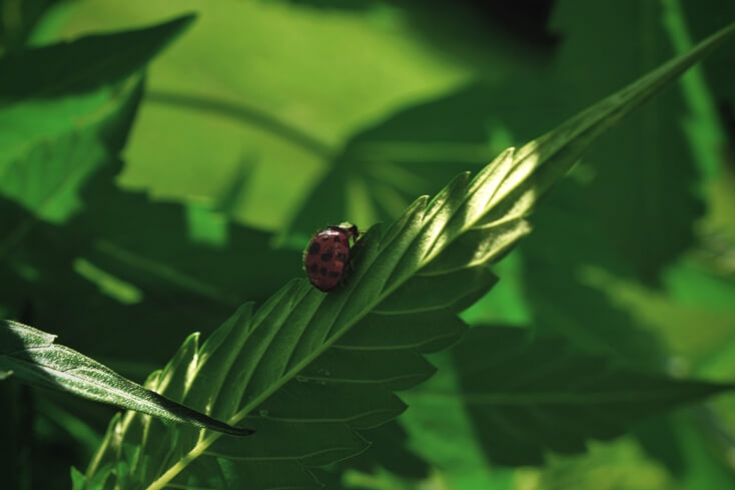.
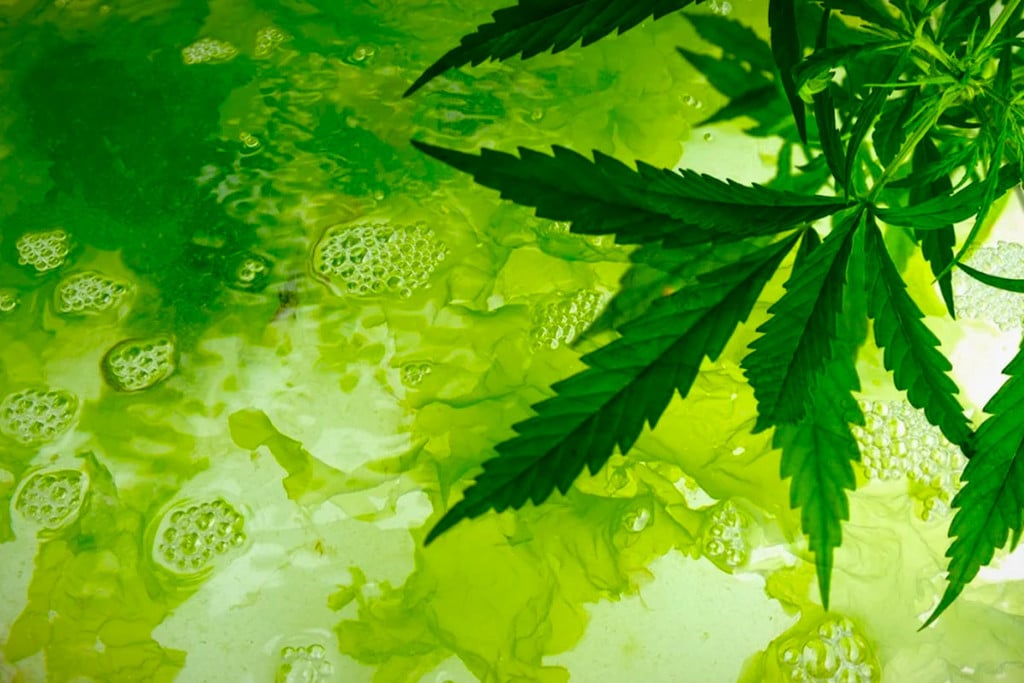
Detecting And Preventing Algae When Growing Cannabis
Is your cannabis looking nice and green? Or are your plants looking tired, wilted, and yellow? If they are, algae could be at the root of the issue. These microscopic organisms can cause a lot of trouble, from pH fluctuations to diseases to pest infections. Learn how to prevent, and treat algal growth to keep your weed plants healthy.
How to keep algae out of your grow
Contents:
Algae boast the status as one of the most important organisms on Earth. The aquatic lifeforms produce up to 50% of all oxygen on the planet, and they serve as food for the majority of aquatic life. Despite their vital role, though, algae can quickly become a problem for growing cannabis.
Moisture-loving algae quickly secure a foothold in hydroponic grows, although they can find their way into any growing medium.
Once established, they pose multiple threats to cannabis plants. Along with obstructing oxygen uptake, they offer a breeding ground to pathogens, and they can become a cosy home for pests. Below, you’ll learn how algae grow, why you don’t want them in your grow space, and what to do when they show up.
How Do Algae Grow?
Ultimately, algae require three primary factors to grow and thrive:
- Moisture
- Light
- Essential nutrients
These environmental requirements are also the building blocks of every hydroponic and aeroponic growing system. The lifeforms become particularly problematic in those systems when they receive more light, freeform nutrients, and access to root systems.
However, they can also be found in other growing mediums like coco fibre and soil. That being said, with denser mediums like the latter, algae can only thrive on the surface.
Algae is almost impossible to avoid when growing hydroponically, especially when utilising organic nutrients and living water with beneficial bacteria. High levels of nitrogen, potassium, and phosphorus—key to cannabis plant development—also fuel algal blooms.
Despite their fundamental role in ecosystems and fascinating behaviour, algae are surprisingly simple lifeforms. Just like cannabis plants, these photosynthetic organisms require light to generate energy to survive, yet they lack leaves, stems, and roots.
Algae first enters hydroponic systems through microscopic airborne spores. Once these small packages of DNA land in a compatible environment, they start to develop into fully-formed cells. Algae reproduce through a process known as mitosis, during which the nucleus divides and produces genetically identical daughter cells.
When mitosis really gets going, algae begins to take over hydroponics sets ups. After proliferating enough, the lifeforms can start to cause several issues that put growing operations and yields at risk.
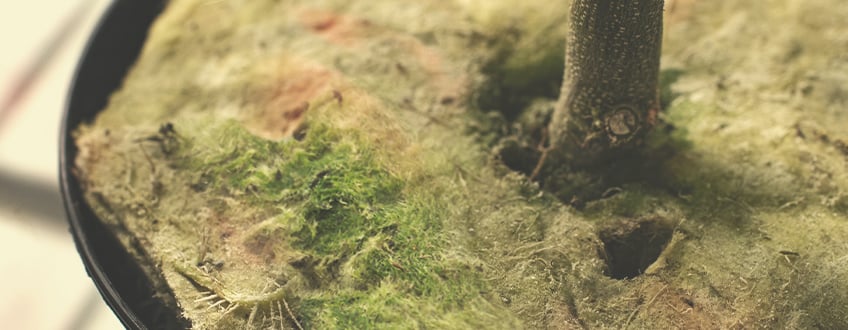
Will Algae Kill My Cannabis Plants?
Left unchecked, algae can cause significant damage to cannabis plants. Algae themselves don’t directly attack cannabis, though. Rather, along with suffocating plants and equipment, they cause harm by attracting pests and pathogens that eat and infect cannabis.
Algae Suffocate Plants And Clog Equipment
As algae proliferate on the water’s surface, it eventually forms large clusters around hydroponic roots systems. The organisms cling to roots as a supportive structure and quickly make their way up, especially if you use organic materials like rock wool. If left to grow out of control, algae disturb root function and impair nutrients abduction and oxygen uptake. They don’t just block roots from taking in oxygen; they steal the essential molecule for itself.
Algae take in carbon dioxide and put out oxygen during photosynthesis. However, these roles switch during the night. Without light, algae begin to transpire and uptake oxygen, leaving your plant with a minimized supply—potentially suffocating the roots. As algae take in oxygen and release carbon dioxide, they cause carbonic acid to accumulate in the water. This causes a significant drop in pH. Wild pH fluctuations occur when algae switch between either of these gases, disrupting optimal pH balance.
Algal growth doesn’t limit itself to the root system of cannabis plants. Before you know it, a vigorous bloom can work its way into pipes, filters, and external water reservoirs. Algae can also block air pumps, impeding ebb and flow systems & potentially causing flooding in automated systems when left unattended.
Algae Attracts Pests That Munch On Weed Plants
Thankfully, algal cells don’t possess mouthparts that chomp through stems, leaves, and roots. However, they do provide an ideal habitat for others that create water at the mouth at the sight of cannabis. These include:
- Midges
- Aphids
- Nematodes
- Cochineals
- Fungus Gnats
All of these pest species feast on different parts of cannabis plants, including the roots and leaves. When these structures take too much abuse at the hands of these critters, key physiological functions become compromised. Leaves with too many holes fail to photosynthesise properly, and damaged roots won’t fulfil oxygen and nutrient demands.
Algae – A Hotbed of Plant Pathogens
If oxygen theft and pests weren’t good enough reasons to warrant banishing algae from your grow room, pathogens will be. Various species of fungi also thrive in moist and stagnant conditions, including:
- Fusarium
- Pythium
- Alternaria
- Verticillium
- Septoria
These species can cause several different diseases to arrive, including root rot and leaf spot disease. Algae also help some of these pathogens get a foothold, even hurting plants that thrive above the surface.
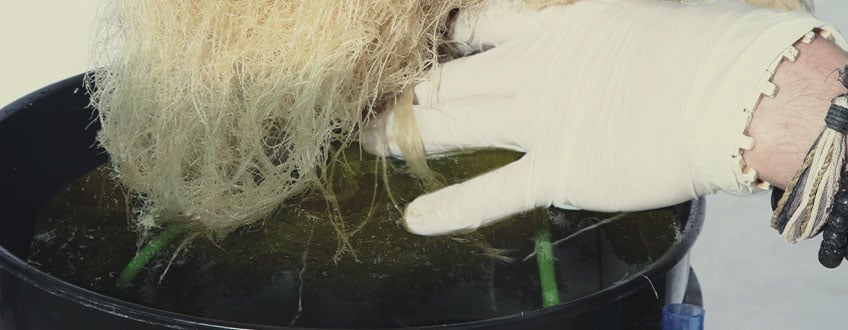
Symptoms of Algae Build-Up on Cannabis Plants
The symptoms of algae are widely varied. The manifestation of plant ailments will depend on exactly how the algae affect your crop—directly or indirectly. The primary symptoms of an algae infestation include:
- Oxygen deprivation (wilting, distorted growth, yellow leaves, dropping leaves).
- pH fluctuations (stunted growth, leaf spots, wilting, nutrient deficiencies).
- Pest infestations (visible insects around the leaves, holes in leaves, yellowing).
- Fungal diseases (wilting, browning, black/brown rotted roots, cankers, oozing sap).
How to Spot Algae
Before we dive into techniques to prevent and tackle algae, you should know exactly how to identify it.
It often appears in the form of a green film on the surface on your reservoir and on the interior of your pumps, tubes, and pipes. They can also display shades of brown, gold, red, and black.
Despite it being visually obvious, growers can also detect algae with their nose before they lay eyes on it. If you detect a mouldy or earthy smell while walking past your grow, you should look for algae forming.
How to Prevent and Manage Algae
As an inevitability in hydroponic growing, working to prevent algae will only go so far. Probability dictates that the organism will show up at some point, especially in organic living grows that aim to accumulate microorganisms. Luckily, small algal infestations will do little to impact the health of your plants, and there are steps you can take to minimise their growth.
Keep Your Equipment Blacked-Out
As the old saying goes, prevention is better than a cure. Taking steps to reduce algal growth will save you more work in the long run.
Because algae require light to grow, establish, and proliferate, depriving them of this life source does wonders to keep their numbers down. To keep them in the dark, follow these tips:
- Go for thick, black plastic when making or purchasing a reservoir and pipes
- Select black tubing (as opposed to transparent)
- Use spray paint to black-out tubs and jars if using the Kratky method
Blacking-out all pieces of equipment and surfaces that contact water and light will give you a great head start against algae from the start.
Maintain An Optimal Temperature Range
Just as it thrives on light and nutrients, algae also adore warmth. The organism will multiply much faster and more efficiently in warmer water. However, your plants will be affected if temperatures drop too low.
Aim to keep the water temperature between 21-23°C to fend off algae while keeping your plants happy. You can track water temperatures and keep them consistent using thermometers and hydroponic heats and coolers.
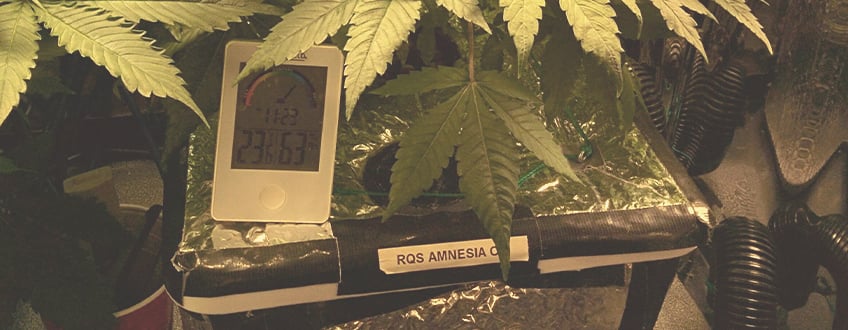
How To Treat An Algae Infestation
Now that we’ve covered the most effective preventative measures, let’s take a look at how to beat algae down once it makes an appearance.
There are several options growers have when it comes to getting rid of algae. Some of them are ideal for sterile growing, whereas others are friendly to living organic growing methods.
Hydrogen peroxide sends algae running.
Mix 3ml of H₂O₂ (3%) with one litre of water and give all surfaces a good scrub down. As a highly volatile and water-soluble chemical, H₂O₂ works to destroy the cell walls of algae and remove them from the growing space.
Utilize some grapefruit seed extract.
Use it as a natural alternative when scrubbing down reservoirs, tubes, pipes, and surfaces. The phytochemicals in this extract help to remove algae quickly.


























